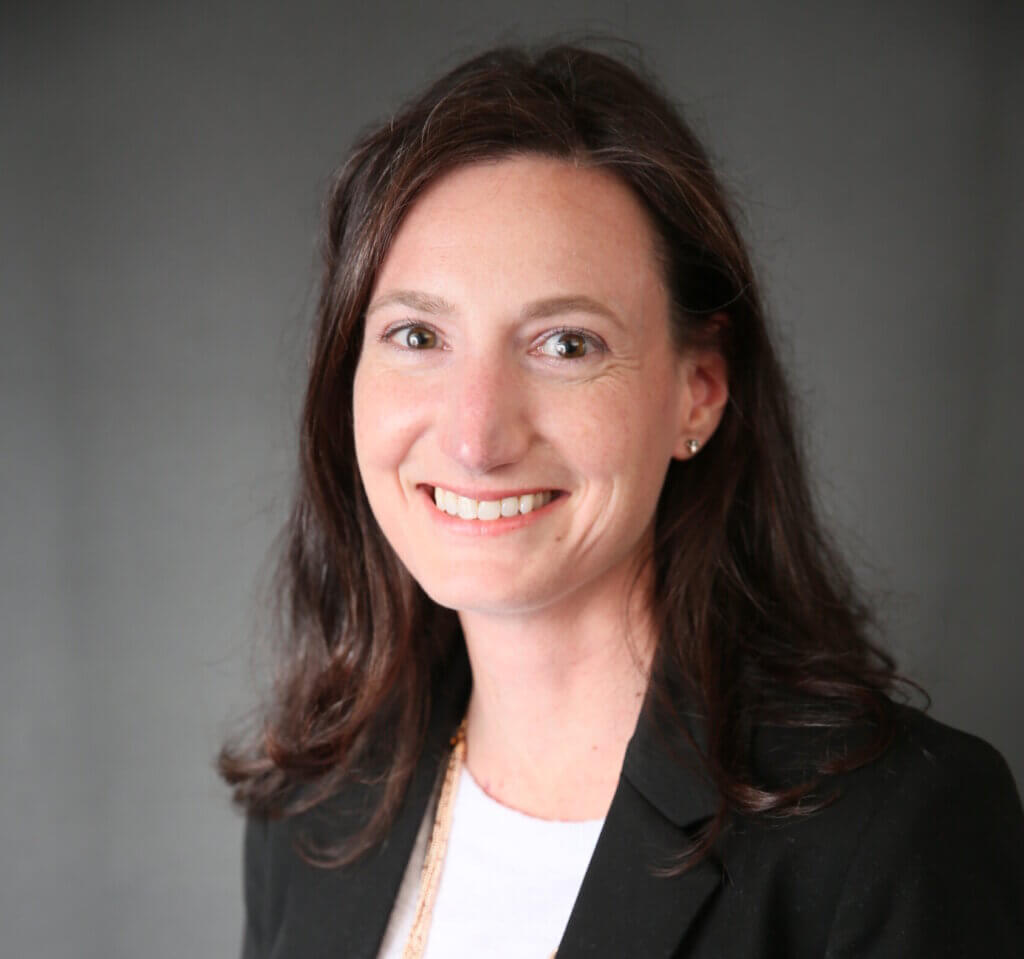David Traverso and TJ Veneris are looking forward to networking and discussing what matters in private equity and venture capital at the PEI Private Funds CFO Network Chicago Roundup this June 6. Reach out via the contact below.

Conference
David Traverso and TJ Veneris are looking forward to networking and discussing what matters in private equity and venture capital at the PEI Private Funds CFO Network Chicago Roundup this June 6. Reach out via the contact below.

North America
Managing Director, Sales at Alter Domus North America
No related content found.
Conference
Alter Domus are looking forward to attending the Global ABS in Barcelona this June, 4-6. This conference is a great opportunity to connect within the structured finance community, gain market insights and make deals.
Be on the lookout for our US team Tim Ruxton, Tom Gandolfo and Lora Peloquin as well members of our European team Juliana Ritchie, Amit Varma, Steve Baxter and James McEvoy.

United States
Managing Director, Sales, North America

United Kingdom
Head of Sales & Relationship Management, Debt Capital Markets, Europe
No related content found.
Conference
Join Juliana Ritchie, Joe Knight, Catherine Hayward-Hughes and Rebecca Pearce in London at the Debtwire Private Credit Forum Europe on May 23rd to learn about the latest intelligence and predictive analysis into the private credit landscape.

United Kingdom
Director, Sales, Debt Capital Markets Europe

United Kingdom
Head of Sales & Relationship Management, Debt Capital Markets, Europe
No related content found.
Conference
We’re delighted to be sponsoring IMN’s US CLO Industry Forum this year! Don’t miss the chance to meet our team in New York on May 20th for the largest CLO investor gathering in the US. Stop by our booth to meet with Lora Peloquin, Randy Reider, Kennedy Glasscock, Devin Joyce and Tim Ruxton to learn more about Alter Domus’ solutions for CLO managers.

United States
Managing Director, Sales, North America

North America
Managing Director, Sales, North America

United States
Managing Director, Sales, North America
No related content found.
Conference
Alter Domus’ Jeff Sykes and Rahul Prabhudesai will be attending the CrossState Connect Annual Convention in Atlantic City, NJ from May 19-21. The event is set to cover the hottest topics in the credit union space, from trends in network lending to the future of fraud and more. Stop by booth #202 to visit with the Alter Domus team and learn more about our range of solutions for credit union professionals.

North America
Senior Manager, Sales and Relationship Management
No related content found.
Conference
What does the future have in store for direct lending, distressed debt, NAV financing, and opportunistic credit? Join Patrick McCullagh at the two-day PDI Europe Summit in London to discuss. From LP considerations on geography, strategies, and risk profiles in debt investing to the fundraising climate and outlook for emerging and existing fund managers, the conference to cover all angles of navigating private credit in such a complex market.
If you’re also attending the event, be sure to reach out to Patrick in advance to set up a meeting.

United Kingdom
Managing Director, Sales, Europe & United States
No related content found.
Conference
The lending landscape is shifting, and staying ahead means understanding the new SOP 50 10 7.1 and recent policy changes. Join Alter Domus’ John Budyak from April 23-25 as he attends the NAGGL Spring Conference in Nashville to uncover the latest in 7(a) lending. Join him there to discuss the strategies and insights critical for thriving in this evolving environment. Get in touch today!

United States
Head of Credit Services, North America
No related content found.
Conference
Join Alter Domus’ very own Mark Gebauer and Dirk Sanden as they attend this year’s BAI Alternative Investor Conference from 22-24 April in Frankfurt. The annual event is focused on alternative investments in Germany, Europe and around the world, and provides the opportunity for attendees to discuss the latest market trends: from the evolving landscape of private credit to private equity co-investments and the impact of artificial intelligence on all markets. Also attending? Set up some time to speak with Mark and Dirk in advance of the conference to discuss these topics and more!

Luxembourg
Director, Sales & Relationship Management

Germany
Country Executive Germany
No related content found.
Conference
Join us in Philadelphia on April 18th as we attend LSTA’s Operations Technology Conference: “Transforming the Loan Market Through Operations and Technology”. Our team of Tim Houghton, Julie DeBlois, Janet Roche and Matt Linke will be attending the event to meet and speak with other members of the broadly syndicated loan and private credit markets. From loan market fundamentals to best practices in trade settlement and restructurings, the event is set to cover a broad range of topics and provide solutions to operational challenges in the market. Keen to find out how Alter Domus can help you solve those problems? Get in touch with our team today!

Luxembourg
Product Strategy Director

United States
Head of Loan Trade Settlement, North America
No related content found.
News
Opportunistic credit funds are gearing up for a busy year, as increased interest rates start to bite. Greg Myers, Group Sector Head of Debt Capital Markets, shares his thoughts with Private Debt Investor for their Opportunistic Credit and Distressed Debt special report.

We have seen significant fund closings and even bigger fund launches in the opportunistic credit space. Why is that corner of private debt proving so attractive?
Opportunistic credit, or special situations, is proving popular for a lot of the same reasons that private credit as a whole is attracting the attention of investors. The difference, of course, is that opportunistic credit funds offer a potentially greater uplift, particularly if you are talking about heavily distressed scenarios. Those types of restructuring deals come with significant outsized return expectations when the distressed assets get restructured or repositioned.
We have seen institutional investors increase allocations to private credit consistently in recent years to take advantage of the yield profile offered by those investments, which are now in the high single to low-double digits for performing loans, even stretching into the mid-teens. On a levered basis, you can go even higher. When you consider a special situations or opportunistic credit strategy, you are looking at returns in the 20-30 percent bracket, which is clearly attractive. I think that is the fundamental draw these funds are able to offer to investors anticipating a credit cycle correction.
What are the key macro factors propelling this opportunity set in the current market environment?
The impact of higher interest rates is starting to make itself felt. A lot of businesses, and particularly sponsor-backed businesses, are beginning to feel the pressure of that increased interest rate burden. At the same time, there has clearly been a profound impact on the consumer, in terms of maintenance of household budgets and the ability to consume. That, in turn, is having knock on implications for the companies manufacturing and selling products to consumers, especially if they have meaningful levels of indebtedness.
I think those trends will continue this year. We have not seen the same level of refinancing that we did a few years ago. Deals are not being restructured at the same velocity and that is inevitably going to impact borrowers, with structural defaults and covenant breaches pushing some credits into meaningful restructuring scenarios, which is often a precursor to a broader market trend that might lead more distressed opportunities.
There have been some aggressive predictions made, suggesting that private debt default rates could reach 5 percent this year. What are your thoughts on that and what implications could that have for opportunistic credit?
Yes, Bank of America research produced in October last year estimated that private debt defaults would soon reach 5 percent, thereby exceeding de[1]fault rates for syndicated loans, based on the fact that around one-third of deals in debt fund portfolios were due to mature within 30 months. That default risk is certainly one cloud hanging over the private credit industry right now, while at the same time creating potential opportunities for opportunistic credit managers.
Which loans are particularly at risk and therefore where do you see opportunistic plays emerging?
Private debt, as an industry, is still relatively young. It only really emerged as a fully-fledged asset class in the aftermath of the global financial crisis, when banks were retrenching from new lending to rebuild balance sheets and manage legacy portfolios.
Since that time, the private debt industry has expanded rapidly. In fact, according to PitchBook, it has swelled from $280 billion in assets under management in 2009, to $1.5 trillion in 2022, as managers have seized the opportunity to fill the void left by banks.
During that time, private credit has never really had to tackle a true market downturn and many of these credits now maturing were issued in a bull market, characterized by high levels of leverage and loose terms. Meanwhile, some managers, particularly those looking to build market share, took on more marginal transactions with especially aggressive capital structures. Those are the credits that will be particularly exposed.
In general, I would say that larger and more established platforms will have been less likely to chase the market in 2021 and 2022 and will therefore have more resilient portfolios. Those managers are also more likely to be well resourced when it comes to managing out any credits that do fall into stress. By contrast, newer managers with smaller teams are likely to come under more pressure. Ultimately, this could lead to a bifurcation in the private credit market, with top tier firms attracting an ever-larger share of both dealflow and fundraising.
Are there any particular sectors where opportunistic credit situations are more prevalent, in addition to consumer and retail?
With the exception of consumer and retail, I wouldn’t say that there is any pronounced trend with regard to the industry focus of our clients in this space right now. We are still in the early stages of how this interest rate environment is going to play out, so I think it is too early to tell. However, I would say that there has been a fair amount of portfolio rebalancing in the oil and gas industry. A lot of the traditional lenders in that space – the big retail banks – are starting to rotate out.
How is the opportunistic credit GP landscape evolving? Are we seeing many new entrants?
I think the players that have been active in this market for some time are continuing to raise funds to take advantage of the anticipated market dislocation. But I would say we are also seeing new managers looking to build teams in or[1]der to enter the space. Some of these new entrants are big name asset managers with a strong legacy in private equity. Others have a strong legacy in direct lending. They are not only looking to access these opportunistic credit deals, but also to market new strategies and new funds to their existing investor base.
How do you see the opportunistic credit market evolving?
I think that there will be a lot more borrowers testing the limits of their credit agreements. That is going to lead to forced divestment for the legacy credit funds that are currently holding onto those assets. It will therefore also lead to opportunities for opportunistic credit funds to participate.
There will probably be some initial mispricing of risk with those credits, but over time, and as the volume of dealflow grows, I think the market will establish a cadence and risk will begin to be priced correctly.
Perhaps, the biggest issue that I see on the horizon is the fact that some of these broadly syndicated loans are billions of dollars in size, which is not something that special situations of opportunistic credit funds have come across in a while. They have more typically dealt with mid-market private credit loans of a couple of hundred million dollars. It will be interesting to see how managers choose to participate in those situations and how pairings of certain GPs plays out.
This article was originally published in PDI’s Opportunistic Credit and Distressed Debt special report.

United States
Global Sector Head, Debt Capital Markets